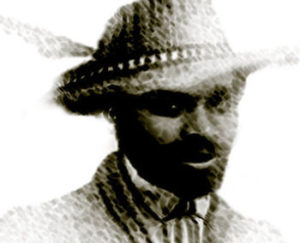
Mathieu da Costa
*Mathieu da Costa was born on this date in 1589. He was a Black Portuguese explorer and translator.
There is little documentation about Mathieu da Costa's childhood. Of at least partial African ancestry, he was a freeman favored by explorers for his multilingual talents. Numerous mixed-race African Portuguese persons of the Atlantic Creole generation often worked as sailors or interpreters. His range of languages included Dutch, English, French, Portuguese, Mi'kmaq, and pidgin Basque, the dialect many Aboriginals used for trading purposes.
The Portuguese first hired him as a translator for their expeditions to the New World. An interpreter, translator, and general go-between, he was known as um grumete in the Portuguese-speaking world. Da Costa worked for the English, French, and Dutch to help in their contacts with Aboriginal peoples in North America; da Costa worked in Amsterdam, Holland, in February 1607. French documents record him working for the leaders of Port Royal in 1608. Da Costa accompanied Du Gua de Monts and Samuel de Champlain on one or more voyages to Acadia and the St Lawrence area. 1609, he was in Rouen, France, and a jail in Le Havre, France.
His activities in Canada ended in 1617. A court case related to expenses incurred by Nicolas de Bauquemare of Rouen to support da Costa dragged on until 1619. He learned to communicate with Aboriginal peoples because the North American cultural context of trading centers, with multilingual populations, was like the African trading ports. Mathieu da Costa died later in 1619 in Quebec, Canada. His translation and communication skills helped reduce the cultural gap between early French explorers and the First Nations.
He was the first recorded free black person to arrive on the territory of today's Canada. His work in Canada is honored at the Port-Royal National Historic Site in Port Royal, Nova Scotia. It is part of the Mathieu da Costa African Heritage Trail, a series of monuments marking African Nova Scotian history in the Annapolis Valley. It was unveiled in July 2005. The Mathieu da Costa Challenge was an annual creative writing and artwork contest started in 1996 by the Department of Canadian Heritage. The challenge encourages youth to discover how diversity has shaped Canada's history and pluralism's vital role in Canadian society.
He was the subject of a French graphic novel, Mathieu de Costa, written by Diane Groulx. A domestic rate postage stamp honoring da Costa was issued by Canada Post on February 1, 2017, in conjunction with Black History Month. A school in Toronto and two streets, one in Montreal and the other in Quebec City have also been named after da Costa.